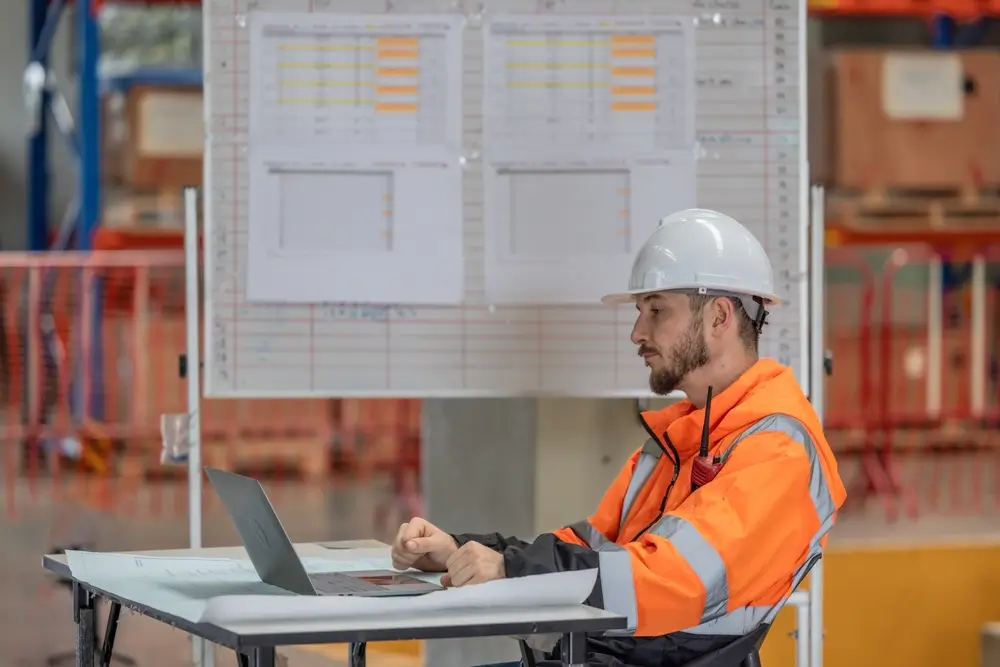What Is Worker Participation?
Worker participation is an integral aspect of safety and health programs, ensuring the active involvement of workers and their representatives in various facets of program development, implementation, and improvement.
Key Components of Worker Participation:
- Involvement in Program Establishment: Workers actively participate in the creation of safety and health programs, contributing their insights and knowledge about potential hazards in their workplace.
- Encouragement and Comfort: All workers are encouraged to participate in the program and feel comfortable voicing their concerns regarding safety and health issues without fear of repercussions.
- Access to Information: Workers have access to necessary information to effectively participate in the program, enabling informed decision-making and proactive hazard identification.
- Opportunities for Participation: Workers are provided with opportunities to engage in all phases of program design and implementation, ensuring their perspectives are considered and integrated into safety measures.
- Protection Against Retaliation: Workers are safeguarded against retaliation for reporting safety concerns, injuries, illnesses, or participating in the program, fostering a culture of transparency and accountability.
Union Representation and Legal Rights:
In workplaces where unions are present, worker representatives must participate in the program per the rights granted under the Occupational Safety and Health Act of 1970 and the National Labor Relations Act, further reinforcing the collaborative nature of worker involvement.
Worker participation stands as a keystone of successful safety and health programs, harnessing the collective knowledge and commitment of workers to create safer work environments for all.
How Worker Participation Is Done?
Worker participation is crucial for the success of safety and health programs. Here’re some of the actions and strategies that can be taken to promote worker participation in safety and health programs at the workplace:
| Action Item | Description |
| Encourage workers to participate in the program | · Provide time and resources for participation
· Acknowledge and reinforce participation · Maintain an open-door policy for safety and health discussions |
| Encourage workers to report safety and health concerns | · Establish a reporting process for injuries, illnesses, hazards, etc.
· Provide feedback on reported issues · Emphasize non-retaliation for reporting · Empower workers to suspend or shut down unsafe activities · Involve workers in finding solutions to reported issues |
| Give workers access to safety and health information | · Share relevant information such as Safety Data Sheets (SDS), injury data, exposure monitoring results, etc.
· Provide additional useful information like manufacturer recommendations, inspection reports, etc. |
| Involve workers in all aspects of the program | · Enable participation in program development and goal-setting
· Engage workers in hazard reporting and solutions · Analyze hazards and develop safe work practices together · Participate in training, evaluations, exposure monitoring, etc. |
| Remove barriers to participation | · Ensure participation regardless of skill, education, or language barriers
· Provide regular feedback and address concerns · Allocate sufficient time and resources for participation · Protect workers from retaliation and address discouraging policies or programs |
Importance Of Worker Participation:
Worker participation is paramount for enhancing workplace safety and developing a culture of hazard mitigation. Worker participation helps in the following ways;
Creating Insight into Hazards:
- Workers possess invaluable firsthand knowledge of potential hazards associated with their jobs. Their involvement ensures a comprehensive understanding of workplace risks.
Ownership and Commitment:
- When workers participate in finding solutions, they feel a sense of ownership over safety initiatives. This develops a deeper commitment to adhering to safety protocols and promoting a safer work environment.
Mitigating Fear of Retaliation:
- To maximize participation, it’s crucial to eliminate any fear of retaliation or discrimination. Workers should feel empowered to report incidents and raise safety concerns without repercussions.
Diverse Participation Roles:
Workers can contribute in various capacities:
Developing initial program designs. Reporting incidents, including near misses. Analyzing hazards associated with routine and no routine tasks. Defining and documenting safe work practices. Conducting site inspections and incident investigations. Training coworkers, both current and new hires. And evaluating program performance and suggesting improvements.
Enhancing Workplace Safety:
- Through active participation, workers contribute to the identification, assessment, and mitigation of workplace hazards. This collaborative approach leads to the implementation of effective safety measures and ultimately promotes a safer work environment for all.
OSHA recommendations for temporary worker participation
Employers are urged by OSHA to engage workers in safety and health endeavors. Standards like ANSI/ASSP Z10, OHSAS 18001, and ISO 45001 define this sentiment. Additionally, the CSB acknowledges worker involvement, planning to include them in future incident investigations, affirming the pivotal role of worker participation in enhancing workplace safety.
OSHA recommendations for temporary worker participation emphasize effective communication and coordination between host organizations, staffing agencies, and contractors. Host organizations should communicate responsibilities, share workplace hazards and controls, and allow representatives from agencies to inspect sites and records. Staffing organizations must report worker concerns and share safety policies.
Effective coordination involves setting safety performance standards, resolving conflicts, aligning safety programs, coordinating schedules to prioritize safety, and ensuring workers have appropriate equipment and training. These actions foster a collaborative approach to temporary worker safety, ensuring a shared commitment to maintaining a safe work environment.
Challenges To Worker Participations And Their Solutions
Worker participation in safety programs faces challenges such as;
- resistance to change,
- communication barriers,
- trust issues, and
- fear of retaliation.
Solutions involve leadership commitment, effective communication and training, implementing non-retaliation policies, and offering incentives for participation. These measures develop a culture where workers feel valued, safe, and empowered to contribute to the improvement of workplace safety.
Conclusion
Worker participation is a fundamental principle that underpins the success of safety programs in today’s workplaces. By involving frontline employees in safety initiatives, organizations can harness their knowledge, experience, and commitment to create safer work environments for everyone. From identifying hazards to implementing preventive measures and promoting a culture of safety, worker participation is key to achieving sustainable improvements in occupational health and safety.
As organizations continue to prioritize worker participation in safety programs, they will not only enhance workplace safety but also develop a culture of collaboration, responsibility, and continuous improvement.





